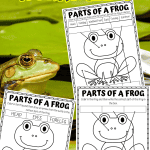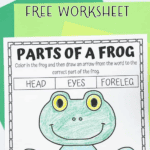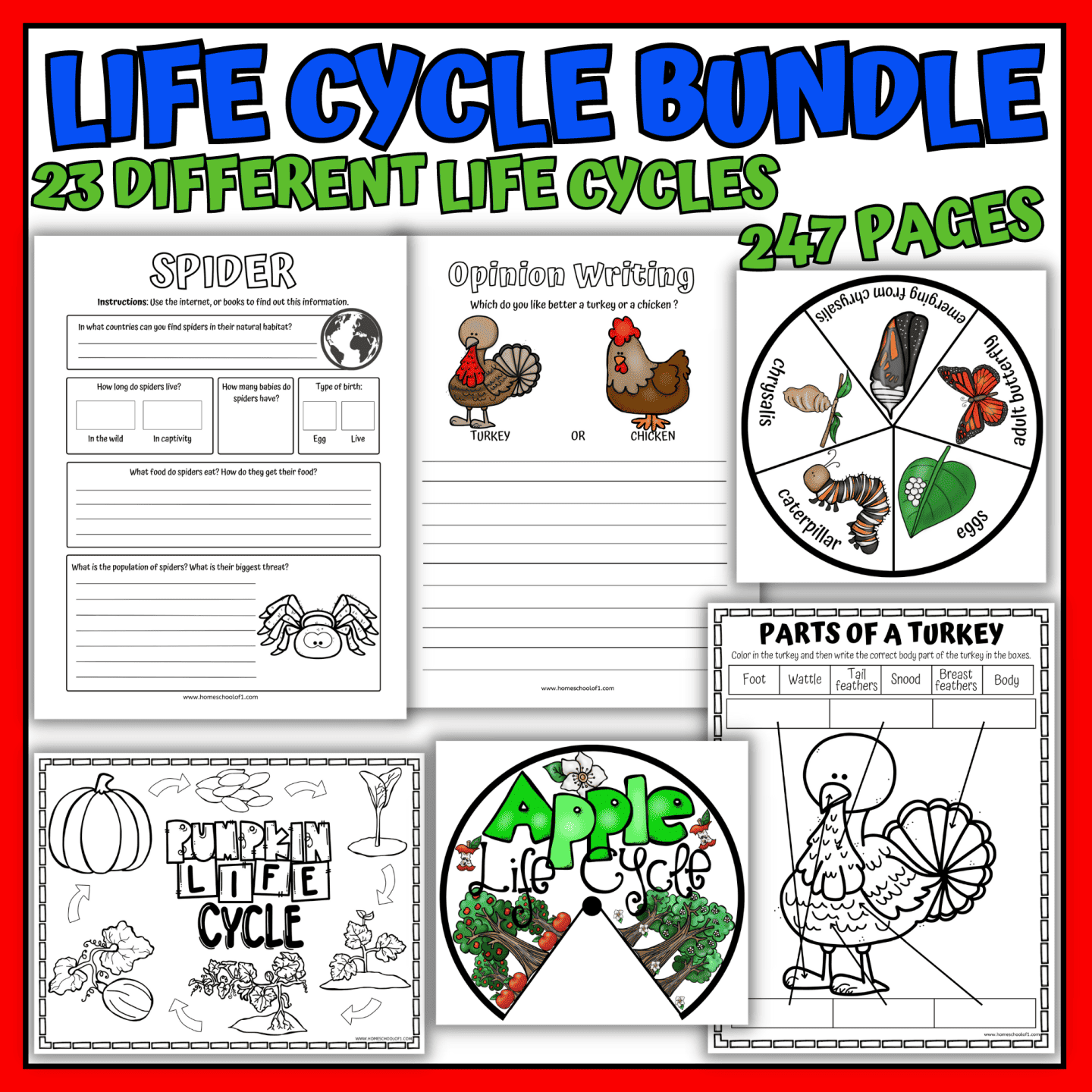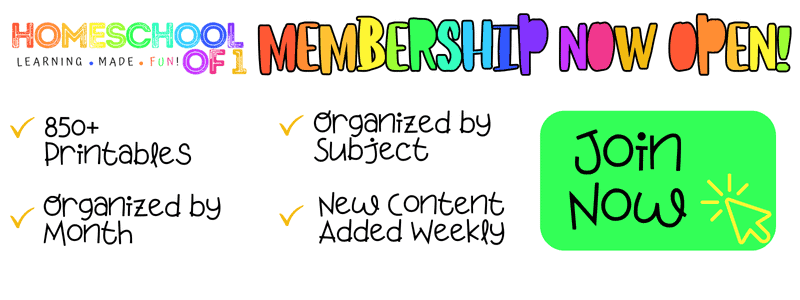Free Parts of a Frog Worksheet
Discover frog anatomy with our free parts of a frog worksheet.
These free printable science worksheets introduce kids to six important frog parts: head, eyes, forelegs, hindlegs, webbed feet, and eardrums.
It’s a simple and fun way to learn about frogs.
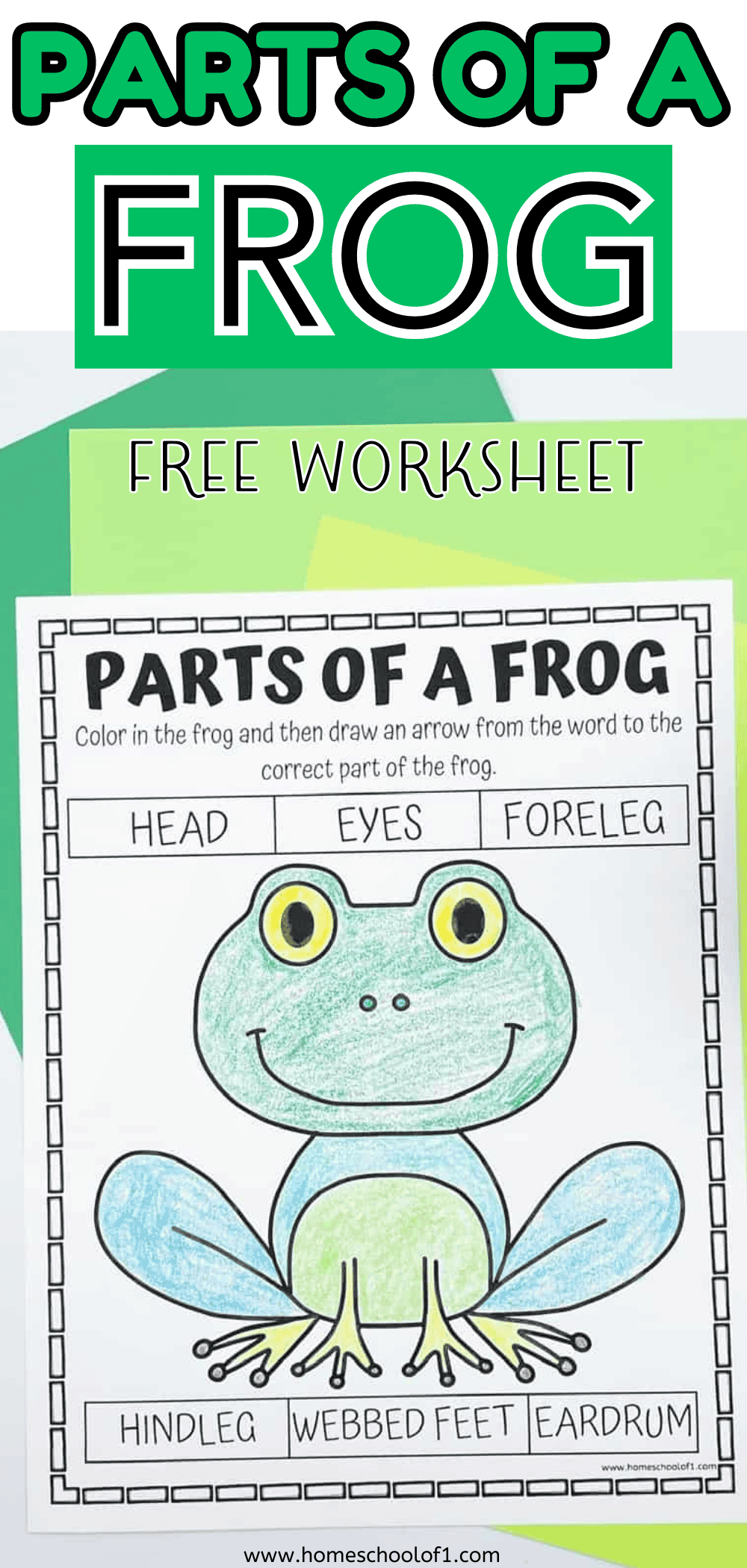
**This post may contain affiliate links. As an Amazon Associate and a participant in other affiliate programs, I earn a commission on qualifying purchases.**
Frog parts worksheet
These worksheets offer a hands-on, interactive way for children to explore frog anatomy while having fun. You have three exciting worksheet options to choose from, catering to different learning levels.
The first worksheet provides a word bank to label the frog’s body parts, making it ideal for younger students or those just starting to learn about frogs. This approach reinforces learning and helps students remember key terms.
The second worksheet offers a bit more challenge, asking students to label the frog’s parts without any hints. This worksheet is great for testing their knowledge and boosting confidence in what they’ve learned.
The third worksheet lets students match the parts of the frog to their correct locations on the diagram, further solidifying their understanding of frog anatomy through a visual and engaging activity.
Each worksheet also includes a detailed frog illustration that children can color in, adding a creative element to their learning experience.
What is the anatomy of a frog?
From their adorable little heads to their webbed feet, we’ll cover it all. So let’s hop right in and discover the parts of a frog!
Head
The head of a frog is like its brain headquarters.
It houses important stuff like the brain itself, which controls all the frog’s actions and reactions.
The mouth is where the frog catches and eats its food, and the nostrils help it breathe when it’s out of the water.
Eyes
A frog’s eyes are located on the sides of its head, providing it with a wide field of vision.
These eyes are equipped with a nictitating membrane, a transparent protective layer that covers the eye and helps keep it moist.
Frogs have excellent color vision, which helps them spot potential mates and detect movement in their environment.
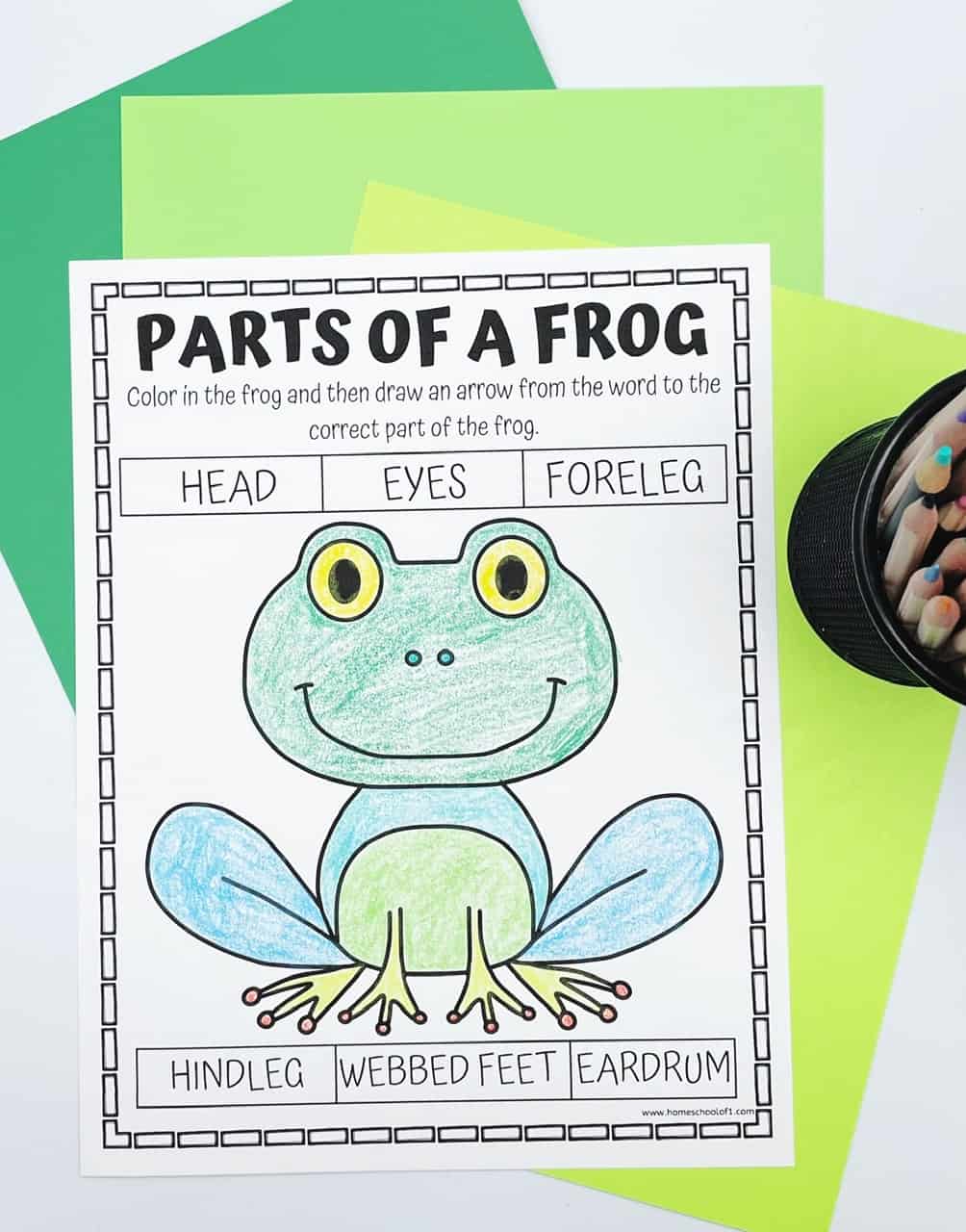
Forelegs
The forelegs of a frog are essential for movement on land and in water.
They are shorter and more muscular than the hindlegs, enabling the frog to propel itself forward when hopping or swimming.
Frogs use their forelegs to help them land safely after a jump and to dig into the ground for burrowing.
Hindlegs
The hindlegs of a frog are designed for jumping and swimming.
They are longer and more powerful than the forelegs, allowing the frog to generate impressive leaps.
The hind legs also contain special adaptations, such as strong muscles and elongated ankle bones, which contribute to their remarkable jumping ability.
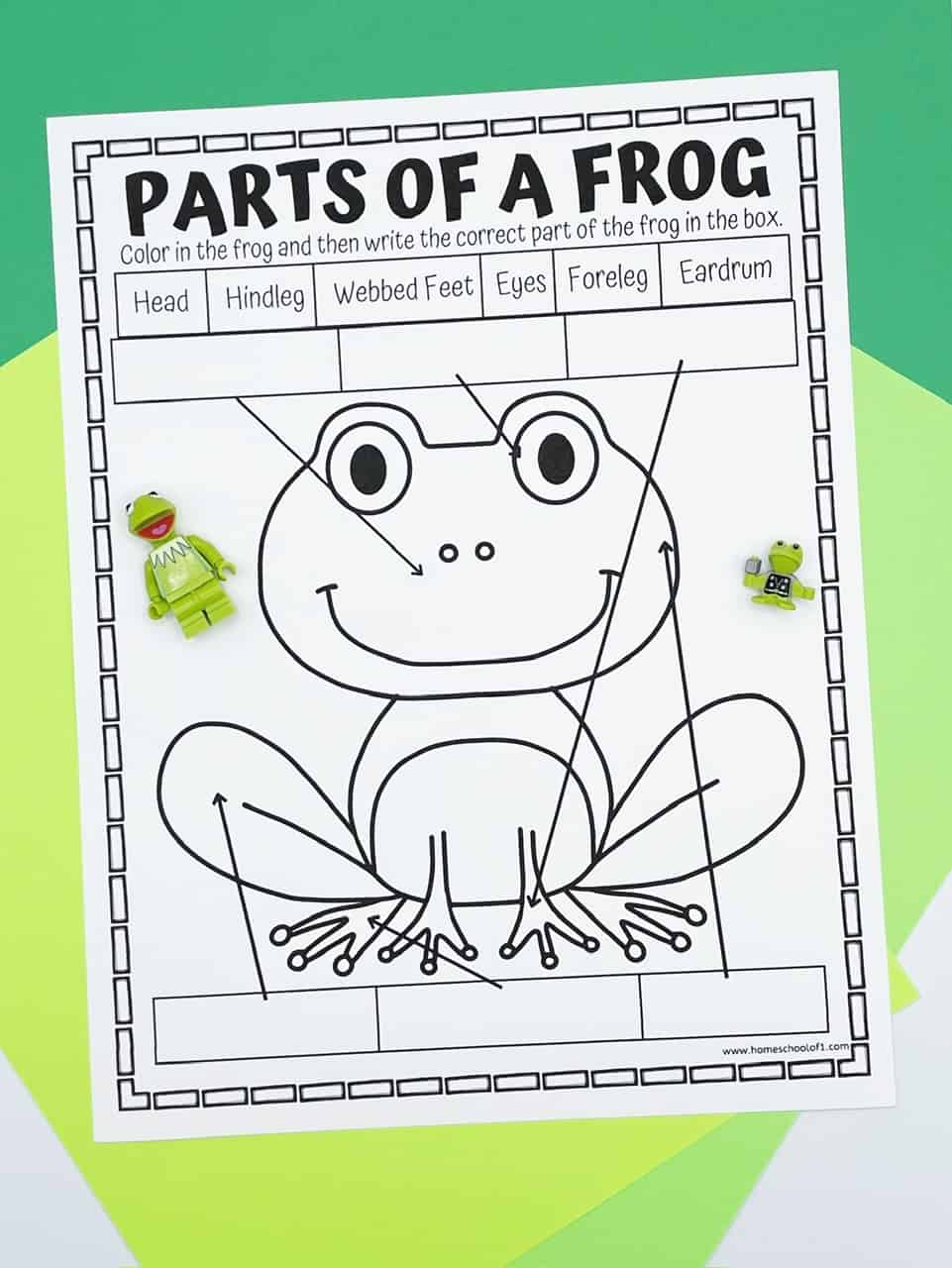
Webbed feet
Frogs’ webbed feet are specialized for life in the water.
The toes of their hind legs are connected by a thin membrane of skin, which forms a wide surface area when the legs are spread.
This webbing aids in swimming, providing better propulsion and maneuverability through the water.
While not all frogs have webbed feet, those that do can be excellent swimmers.
Eardrum
A frog’s eardrum, also known as the tympanic membrane, plays a crucial role in their communication and survival.
Located behind each eye, these thin membranes vibrate when sound waves hit them.
Frogs use their eardrums to detect the calls of other frogs and toads, helping them find mates and avoid predators.
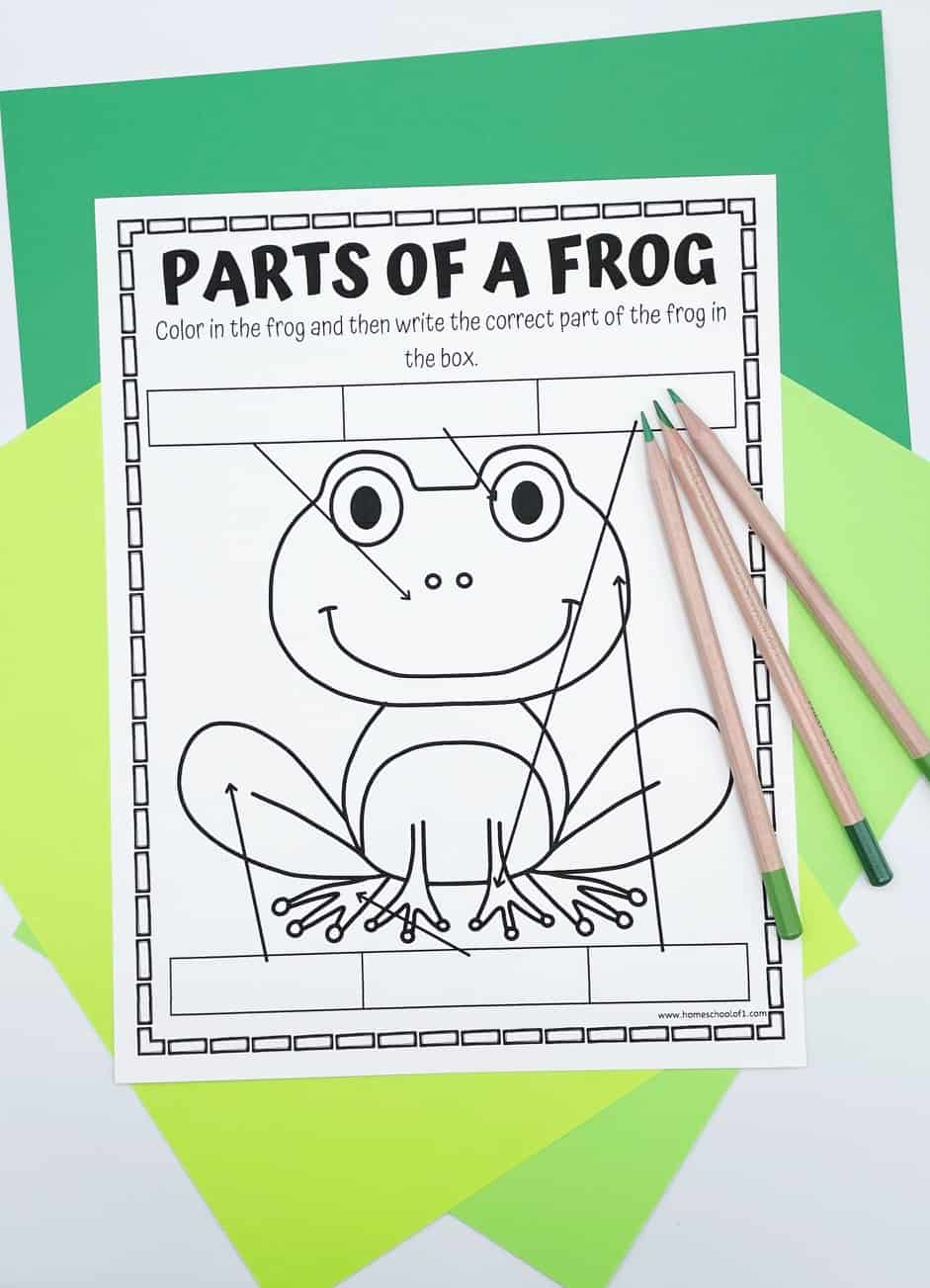
Books about frogs for kids
Add a fun read aloud about frogs, these are our favorite frog books for preschool:
I am a Frog! is an engaging children’s book that takes readers on a journey into the life of a frog. Written with a playful tone, the book explores the experiences and adventures of a lovable frog character.
This Book is Perfect! is a hilarious and interactive picture book designed to captivate young readers aged 3 to 7. With witty humor and engaging illustrations, the book invites children to join in on the story and become active participants. The book celebrates imperfections and teaches children the importance of embracing their individuality.
The Frog Who Lost His Croak is a heartwarming tale that follows the journey of a frog who wakes up one day unable to croak. The story explores the frog’s quest to find his lost croak and regain his voice. Along the way, the frog encounters helpful friends who provide support and encouragement.
Additional free frog printables
Carry on learning about frogs with these life cycle of a frog activities:
Explore the fascinating stages of a frog with our life cycle of a frog worksheet, perfect for hands-on learning.
Engage younger students with tailored free frog worksheets for preschoolers designed to enhance early education.
Unleash creativity with a captivating frog life cycle color sheet, allowing children to express themselves artistically.
Dive into interactive fun with a Big Mouth Frog printable from Homeschool Preschool, encouraging imaginative play.
Transform learning into a memorable experience with a cute frog headband printable from Simple Everyday Mom, perfect for role-playing adventures.
Need to print later? Add this to your Pinterest board or share it on Facebook. You’ll have it handy whenever you’re ready to use it!
Get the free frog body parts worksheet here!
If you are running short on time you can download all of our life cycle worksheets. There are 247 pages over 23 different life cycles.
If you don’t see the form below, click here to get the free anatomy of a frog worksheet.
Last Updated on 23 October 2025 by Clare Brown

